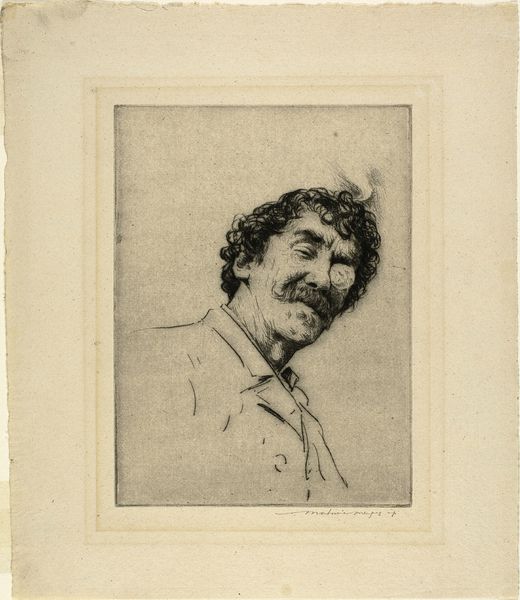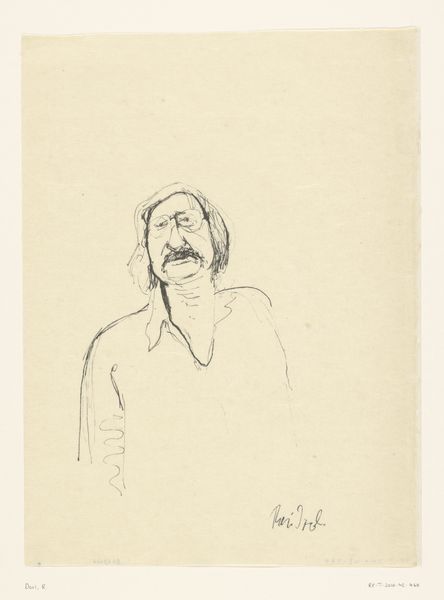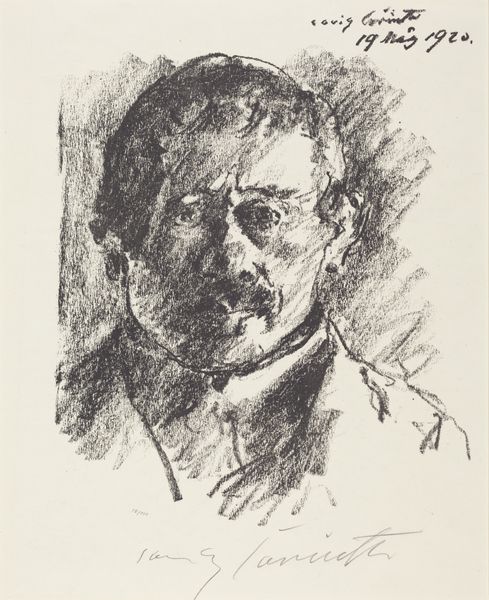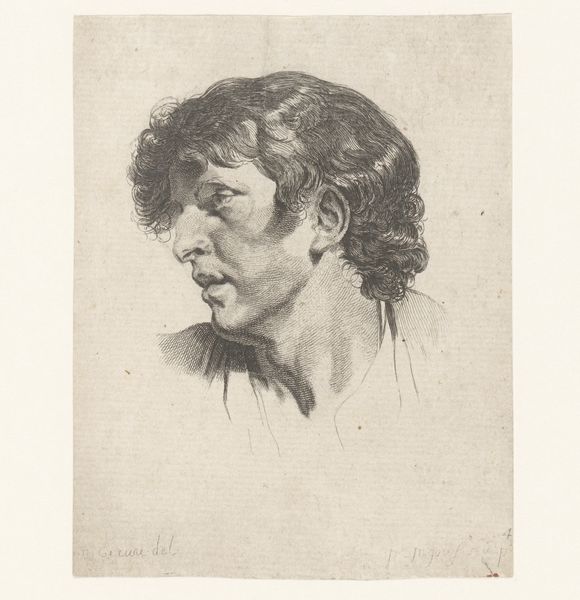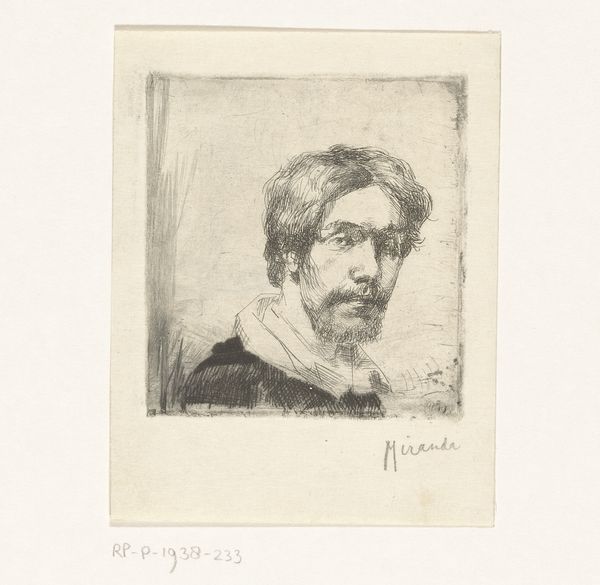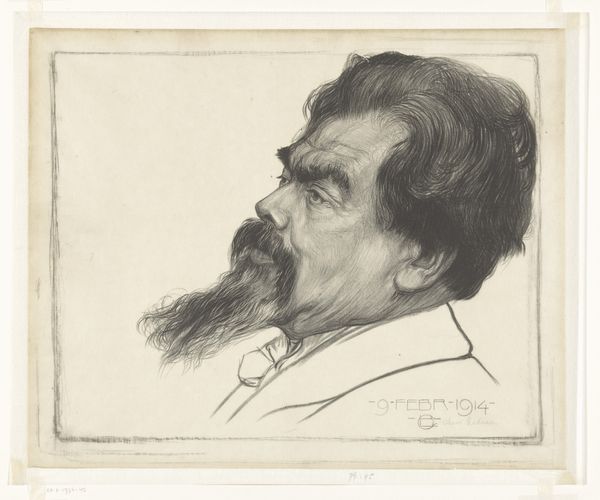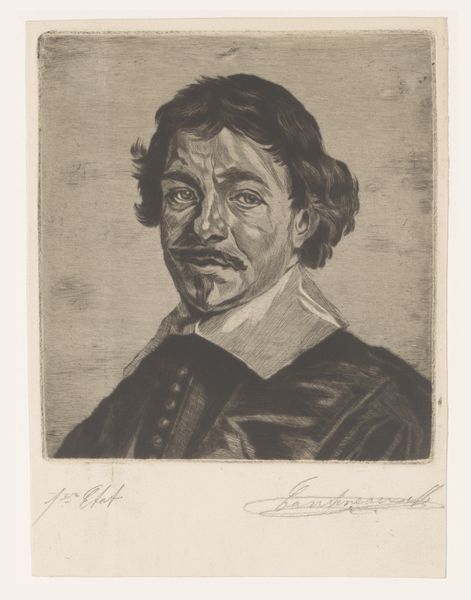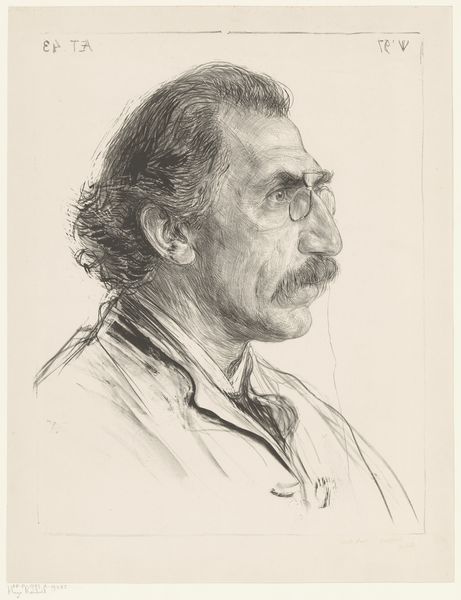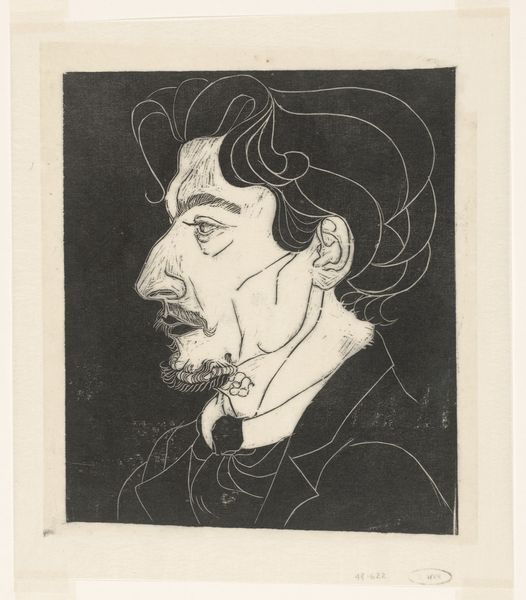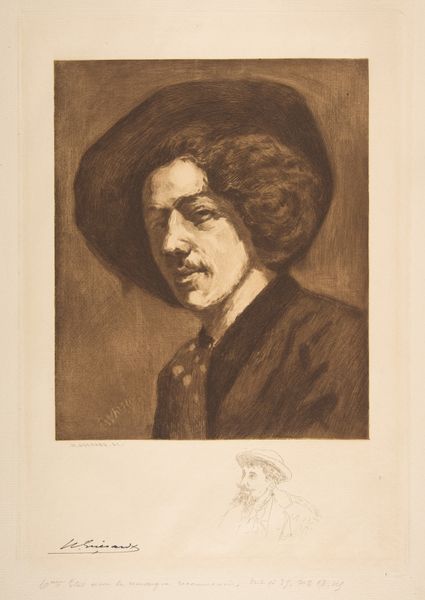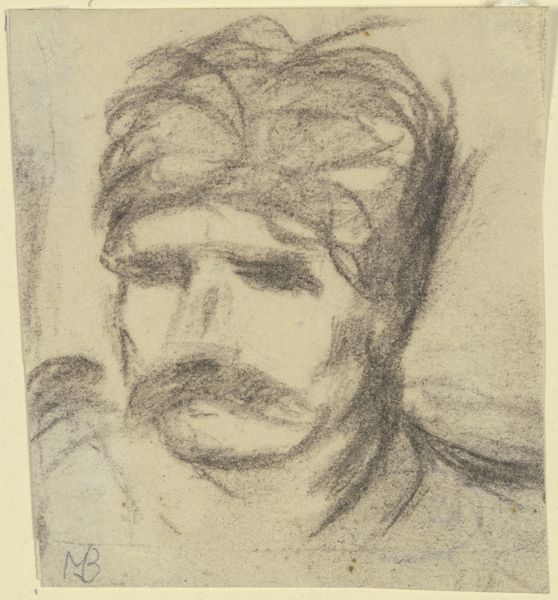
drawing, print, etching, paper
#
portrait
#
drawing
# print
#
etching
#
paper
#
portrait drawing
Dimensions: 190 × 141 mm (image/plate); 266 × 218 mm (sheet)
Copyright: Public Domain
Curator: Look at that mischievous grin! Editor: Indeed. We are observing Mortimer Menpes' etching "Whistler no. 3", likely completed between 1902 and 1903, currently held at the Art Institute of Chicago. Curator: It's a portrait, but so informal! There's a wonderful, almost careless energy to the line work, a real sense of intimacy. Editor: That perceived informality, however, is very carefully constructed. The choice of etching, a printmaking technique allowing for detailed lines and tonal gradations, reinforces a visual association with the “master’s hand”. The political import here stems from Menpes positioning himself—and by implication his style—in direct relation to Whistler. Curator: I see what you mean, positioning and appropriation. But isn't it also a depiction of genuine friendship, and admiration? It transmits this jolly sensation through his sly expression, squinting eyes, and luxuriant mustache. Editor: It’s complicated, like most artist relationships. Whistler certainly held immense influence, acting as something of a cultural kingmaker during the aesthetic movement. But their friendship soured over artistic and personal disagreements. Consider the implications of Menpes, post-fallout, memorializing Whistler in print; this "no. 3" suggests other renditions, a study and perhaps critique in images, beyond any purely celebratory meaning. Curator: Yes, I hadn’t thought of the sequence… Almost like Menpes is trying to understand Whistler, breaking down his charismatic aura through these portraits, seizing a piece of that powerful visual identity in the process. Editor: Exactly! This portrait becomes more than just an image. It represents the complexities within the late 19th-century art world, the pushing and pulling of influences, of market, of personality. Curator: It certainly has layers that reflect personal affections, power and conflict. Fascinating to view it through this complex background. Editor: Indeed. Every line holds a narrative, wouldn't you agree?
Comments
No comments
Be the first to comment and join the conversation on the ultimate creative platform.
